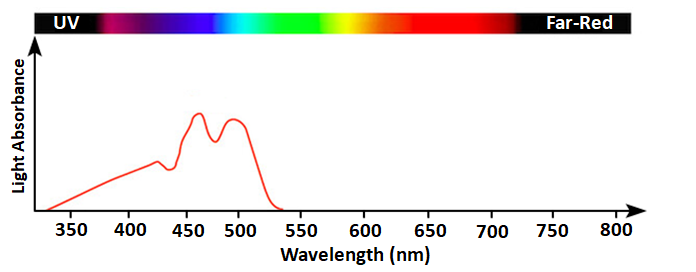Assertion: When simultaneously exposed to light of both red and far red wavelengths, the rate of photosynthesis is far higher than the sum of the red light and far red light photosynthesis rates.
Reason: Two photosystems, processing different wavelengths, cooperate in photosynthesis.
1. Both assertion and reason are true and the reason is the correct explanation of the assertion.
2. Both assertion and reason are true but the reason is not the correct explanation of the assertion.
3. Assertion is true but reason is false.
4. Both assertion and reason are false.
- If both the assertion and the reason are true and the reason is a correct explanation of the assertion
- If both the assertion and reason are true but the reason is not a correct explanation of the assertion
- If the assertion is true but the reason is false
- If both the assertion and reason are false
Reason: Two photosystems, processing different wavelengths, cooperate in photosynthesis.
2. Both assertion and reason are true but the reason is not the correct explanation of the assertion.
3. Assertion is true but reason is false.
4. Both assertion and reason are false.
- If both the assertion and the reason are true and the reason is a correct explanation of the assertion
- If both the assertion and reason are true but the reason is not a correct explanation of the assertion
- If the assertion is true but the reason is false
- If both the assertion and reason are false
Assertion: A reduction in photorespiration by genetic engineering or because of increasing atmospheric carbon dioxide (due to fossil fuel burning) may not benefit plants as has been proposed.
Reason: Photorespiration may be necessary for the assimilation of nitrate from soil.
1. Both assertion and reason are true and the reason is the correct explanation of the assertion.
2. Both assertion and reason are true but the reason is not the correct explanation of the assertion.
3. Assertion is true but reason is false.
4. Both assertion and reason are false.
- If both the assertion and the reason are true and the reason is a correct explanation of the assertion
- If both the assertion and reason are true but the reason is not a correct explanation of the assertion
- If the assertion is true but the reason is false
- If both the assertion and reason are false
Assertion: Plants photosynthesise during the day, whereas they respire at night.
Reason: Photosynthesis can occur in the presence of sunlight whereas respiration cannot.
1. Both assertion and reason are true and the reason is the correct explanation of the assertion.
2. Both assertion and reason are true but the reason is not the correct explanation of the assertion.
3. Assertion is true but reason is false.
4. Both assertion and reason are false.
- If both the assertion and the reason are true and the reason is a correct explanation of the assertion
- If both the assertion and reason are true but the reason is not a correct explanation of the assertion
- If the assertion is true but the reason is false
- If both the assertion and reason are false
Chloroplasts:
I. have their own DNA and make all proteins needed by them
II. have a uniparental inheritance
III. cannot be made by the plant cell
1. Only I and II are correct
2. Only I and III are correct
3. Only II and III are correct
4. I, II and III are correct
Robin Hill discovered that the isolated chloroplasts from plants can release oxygen when they are illuminated by sunlight in the presence of a suitable electron acceptor. This showed:
I. oxygen () is produced by a reaction that is separate from carbon dioxide () fixation.
II. the reaction in which oxygen is released requires light.
III. the light dependent reaction of photosynthesis is a result of a series of redox reactions.
1. I and II only
2. I and III only
3. II and III only
4. I, II and III
The enzymes for synthesis of organic molecules, in autotrophic bacteria, are located:
1. on chloroplast membranes
2. in the cytosol
3. in the nucleoid region
4. along the inner surface of the plasma membrane
The absorption spectrum shown in the given figure can be of:
1. Chlorophyll a
2. Chlorophyll b
3. Carotenoids
4. Either 1 or 2
The number of electrons that need to be transported during cyclic photophosphorylation in sulphur bacteria, to produce one molecule of ATP is:
1. one
2. two
3. three
4. four
The pH of the space of thylakoid of isolated chloroplast is decreased and then transferred in the dark to a pH-8 solution. The result would most likely be:
I. The isolated chloroplasts will make ATP.
II. The Calvin cycle will be activated.
III. Cyclic photophosphorylation will occur.
1. Only I
2. Only I and II
3. Only I and III
4. Only II and III
A possible purpose of photorespiration may be:
1. assimilation of nitrate from the soil
2. translocation of carbohydrates
3. enhanced PGR efficiency
4. differentiation of plant cells




